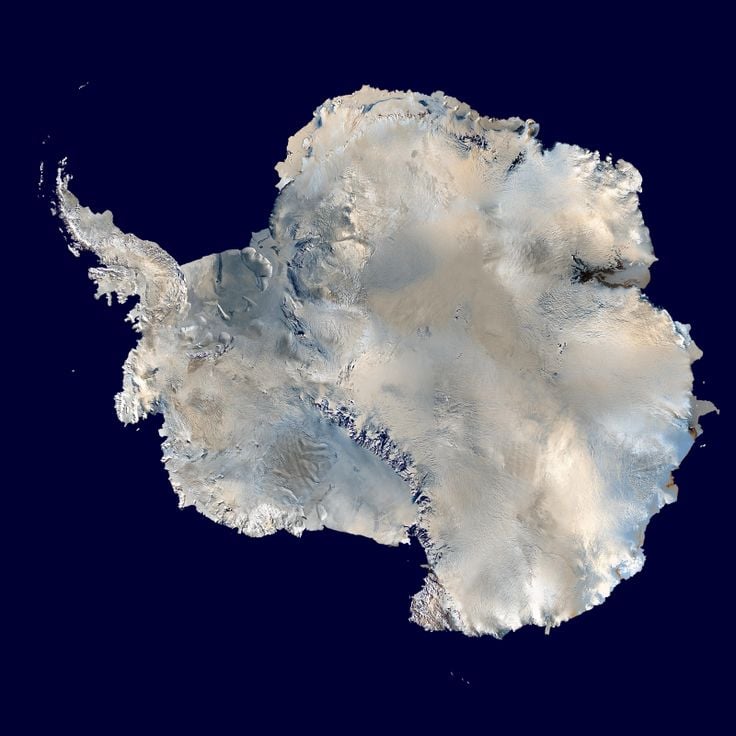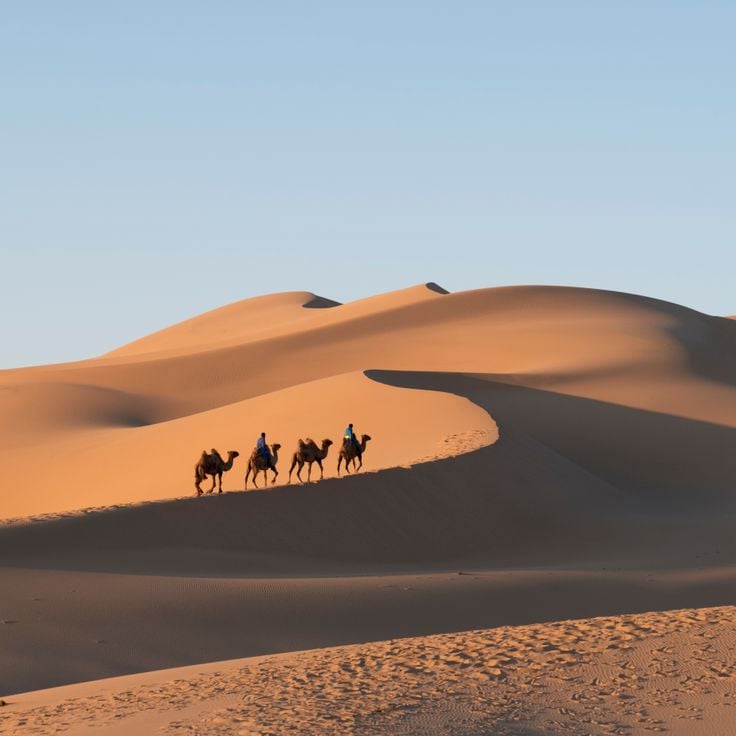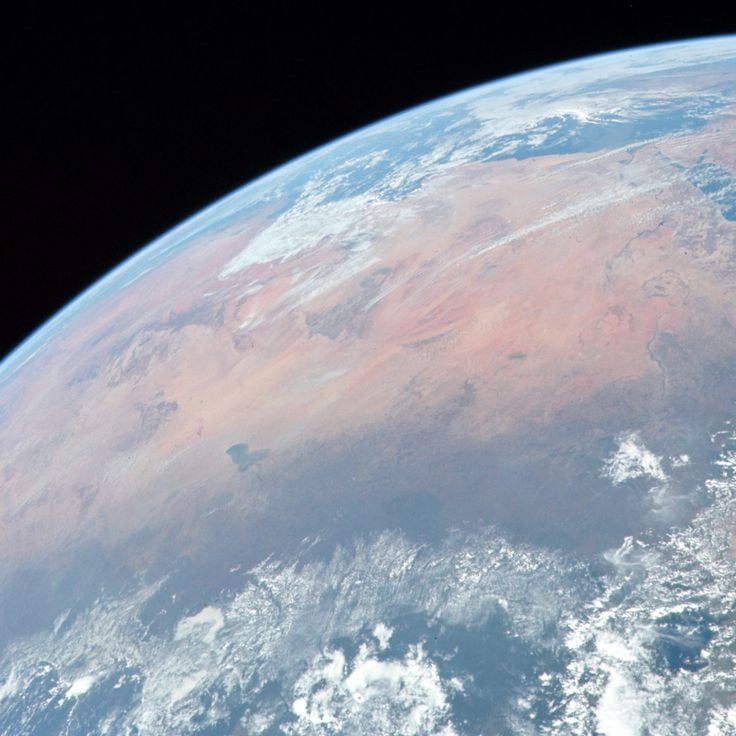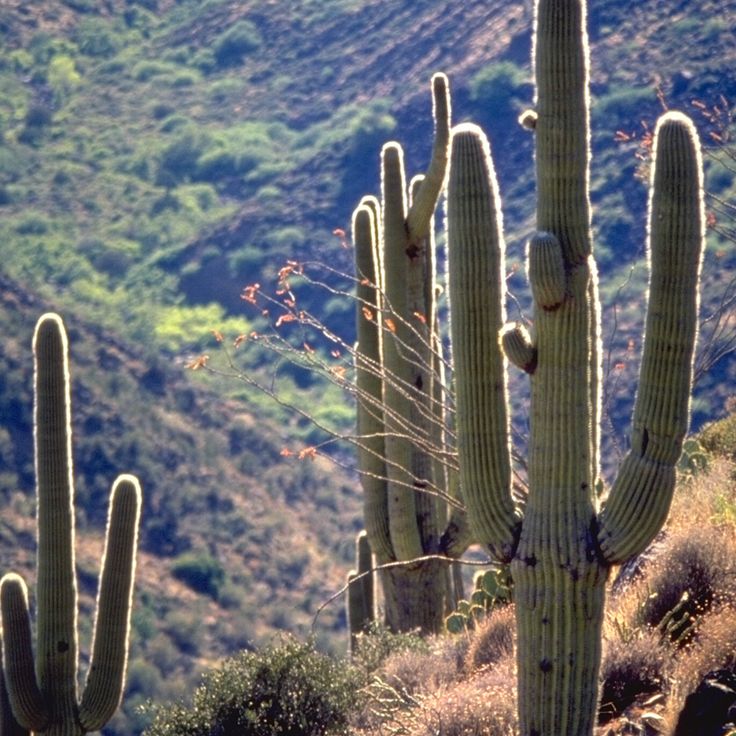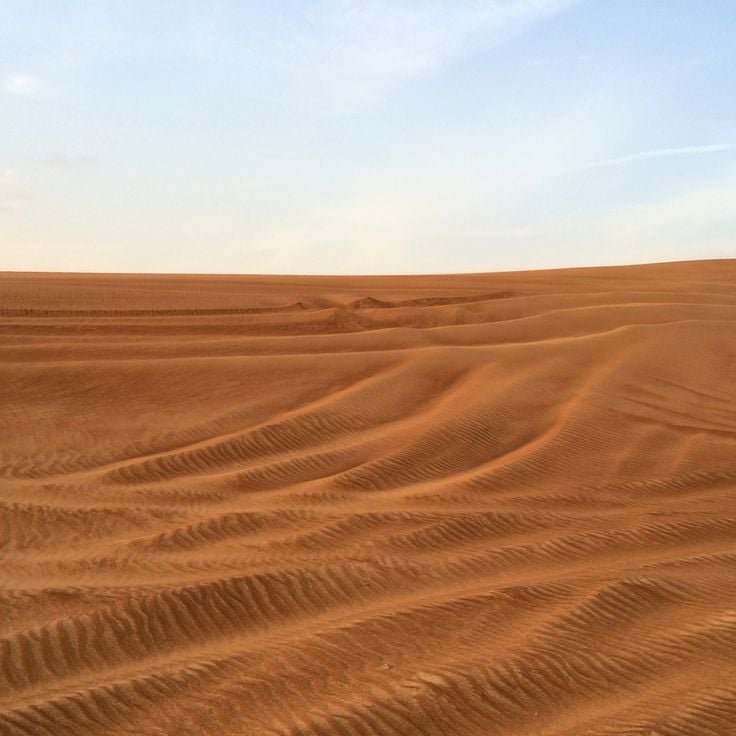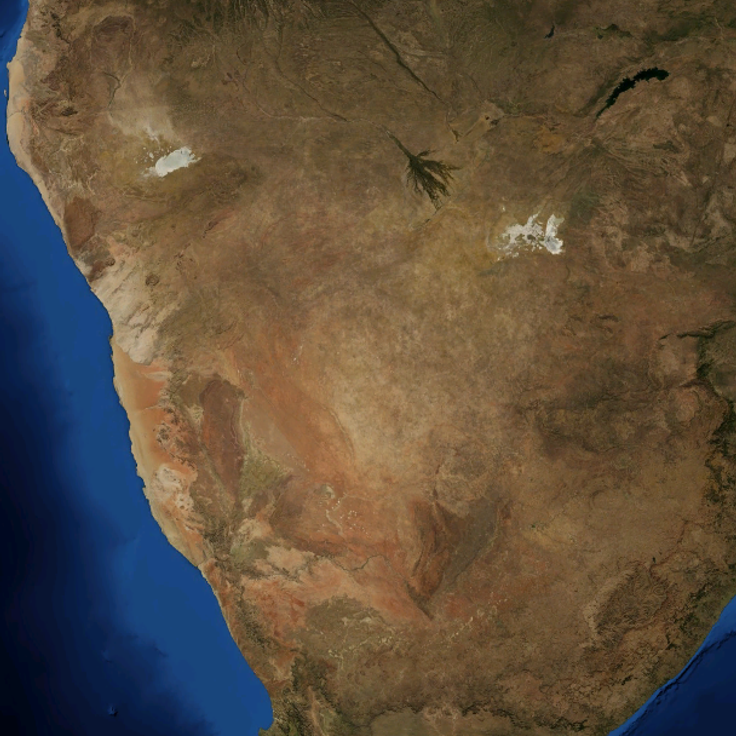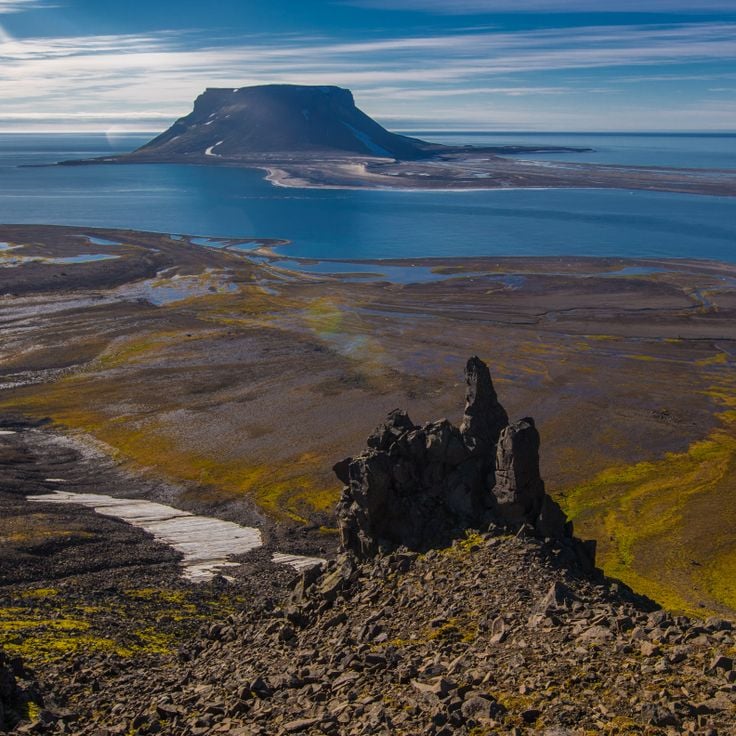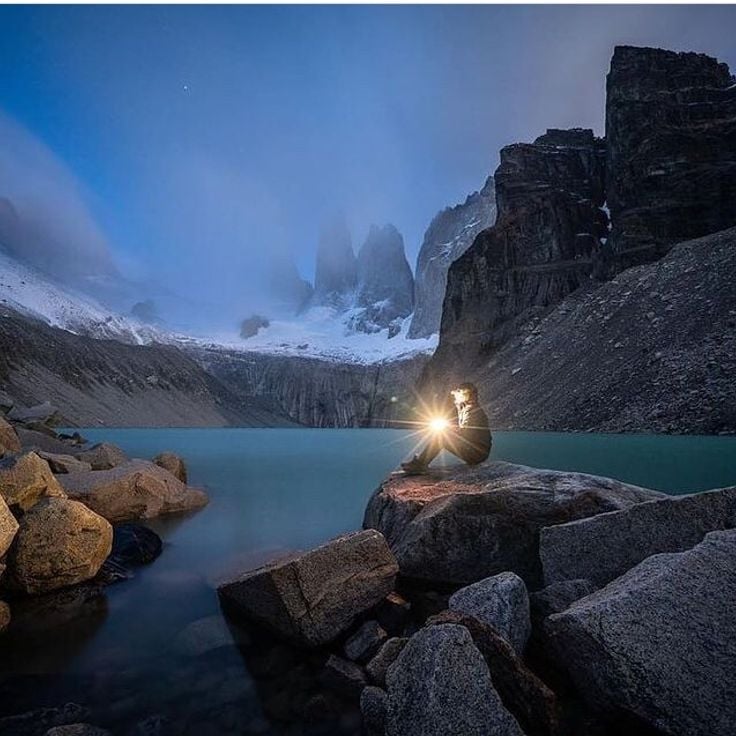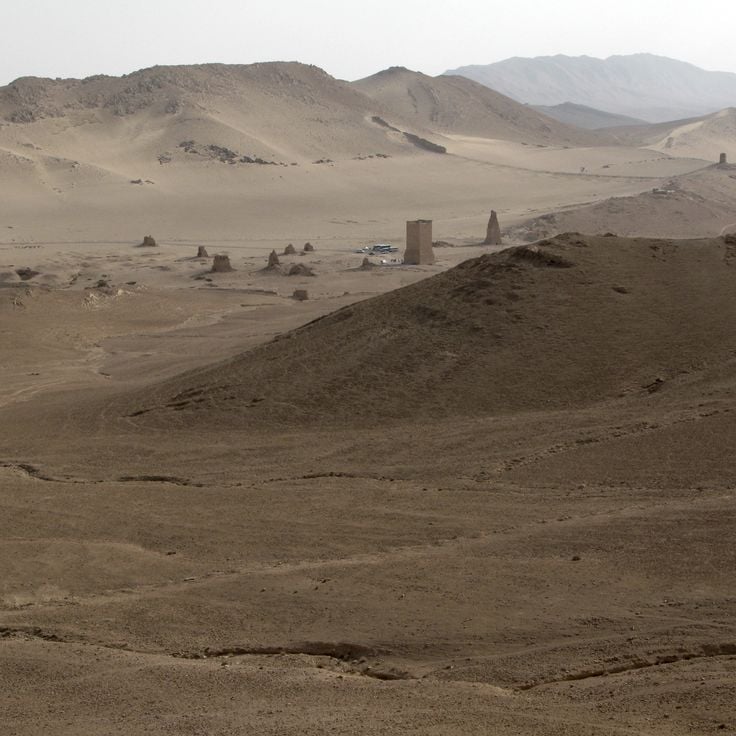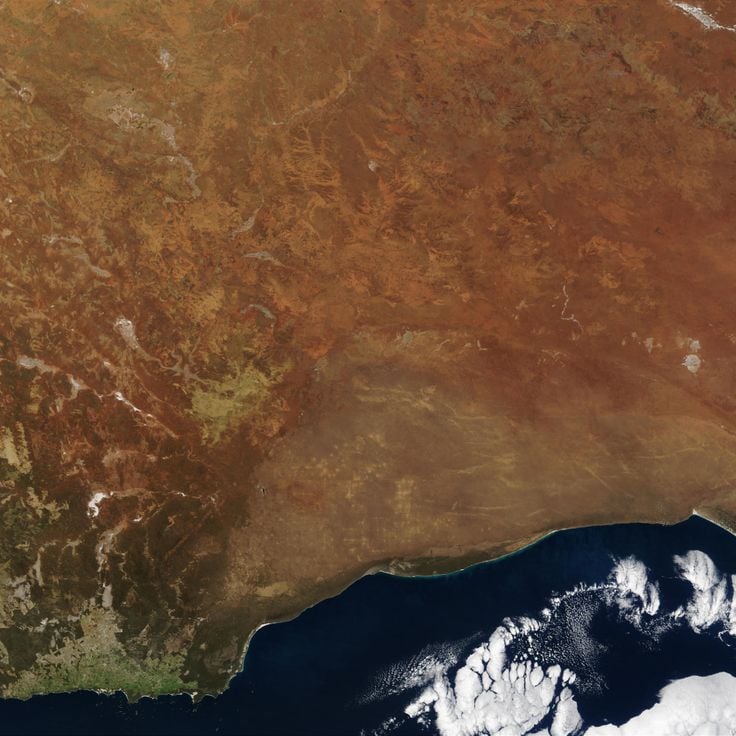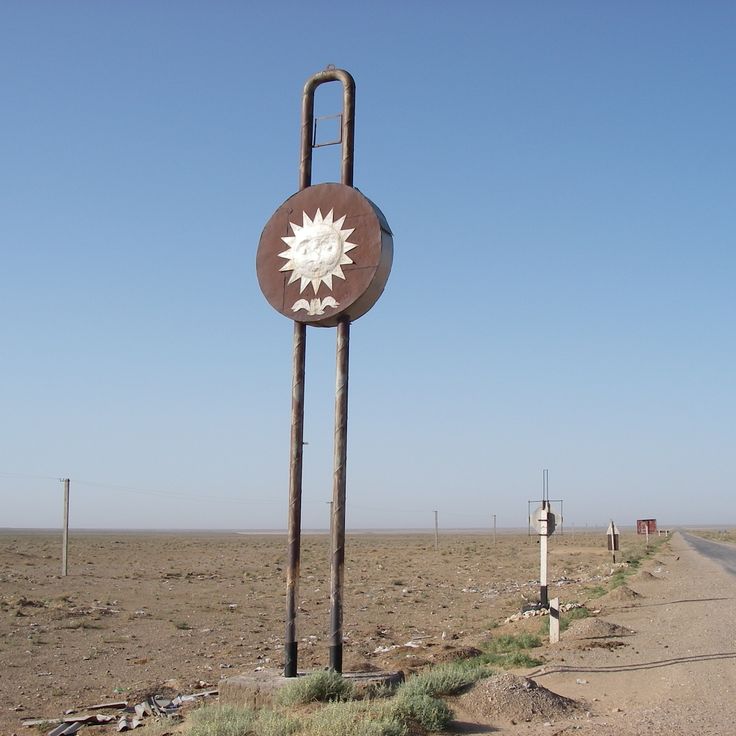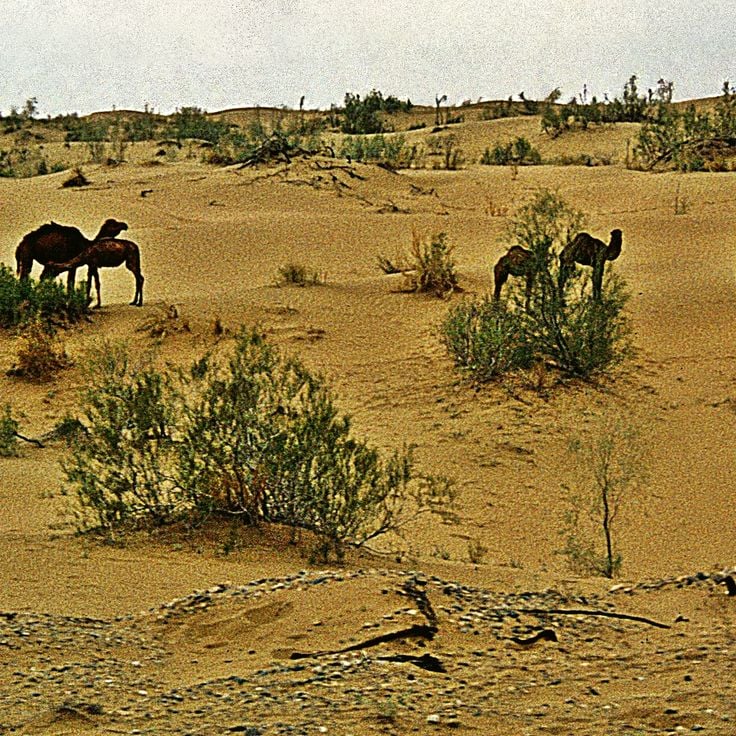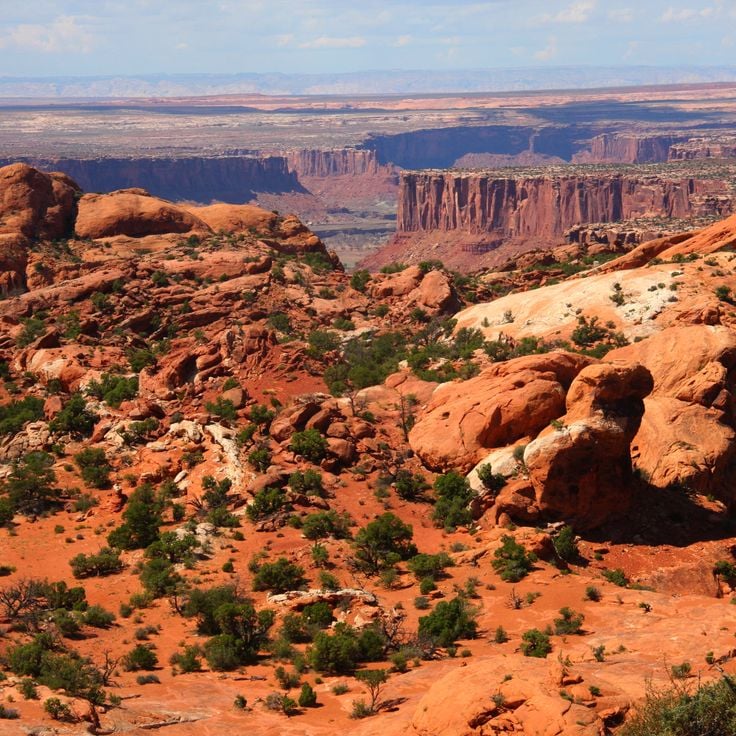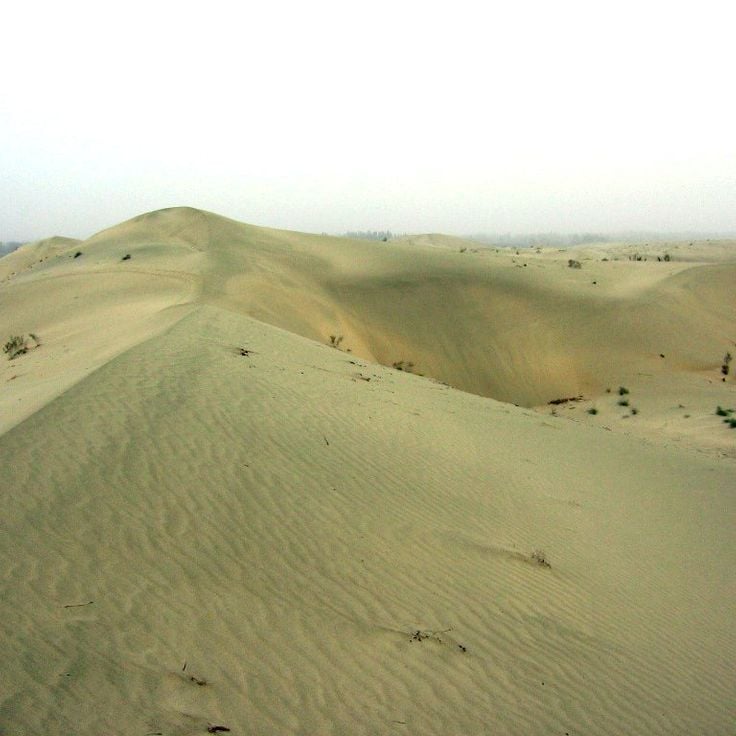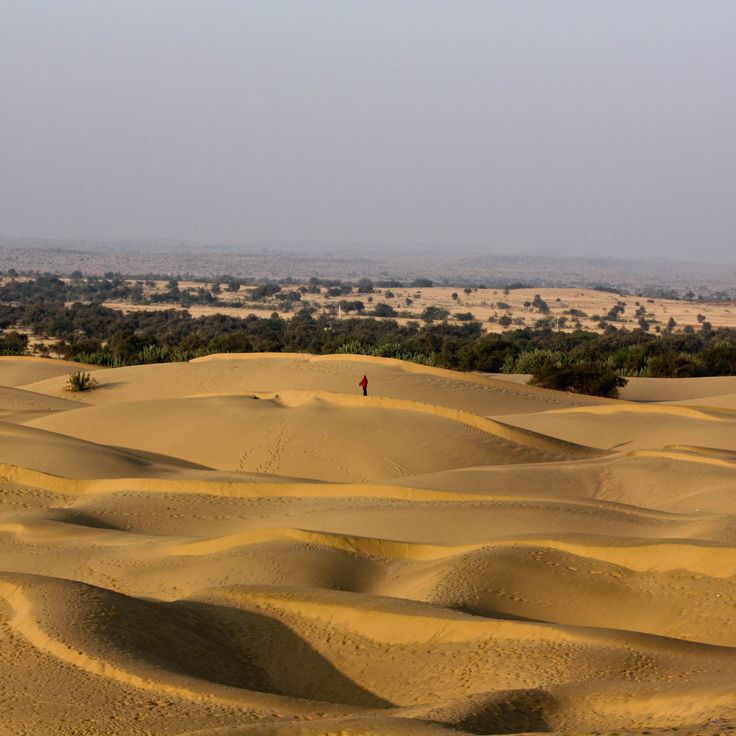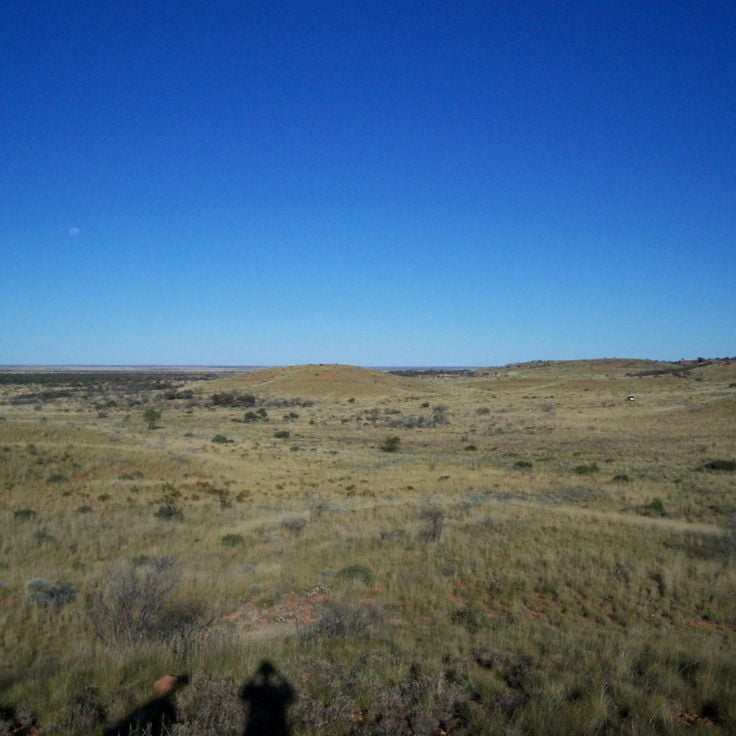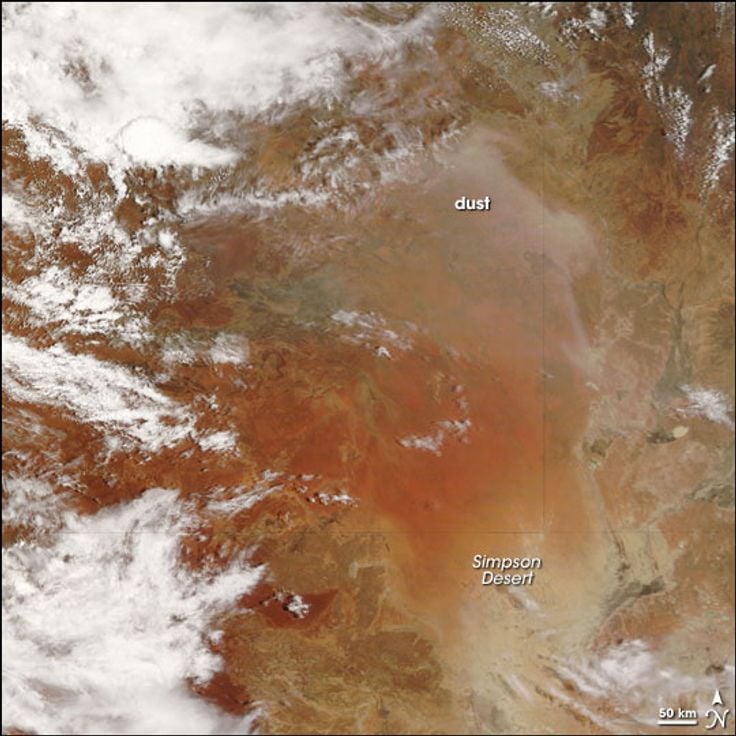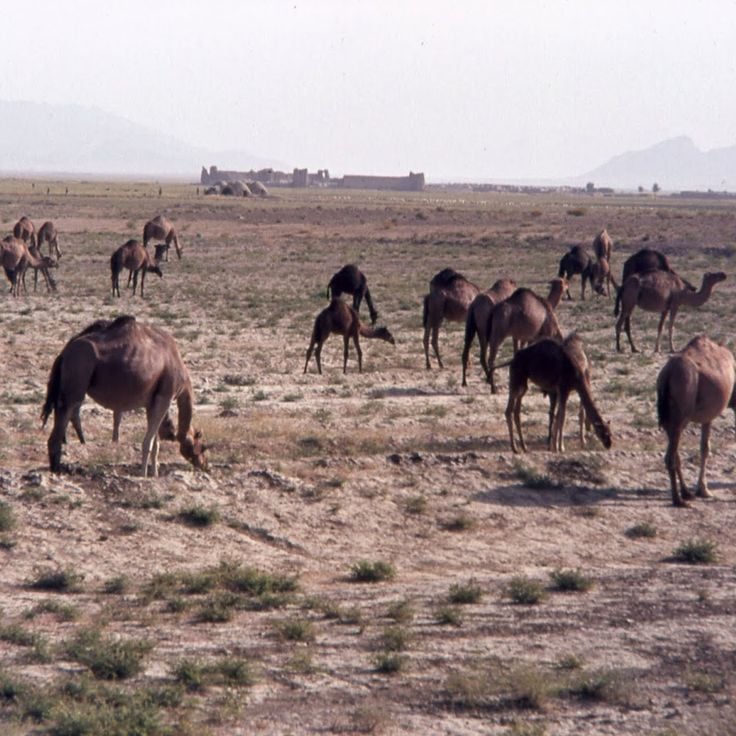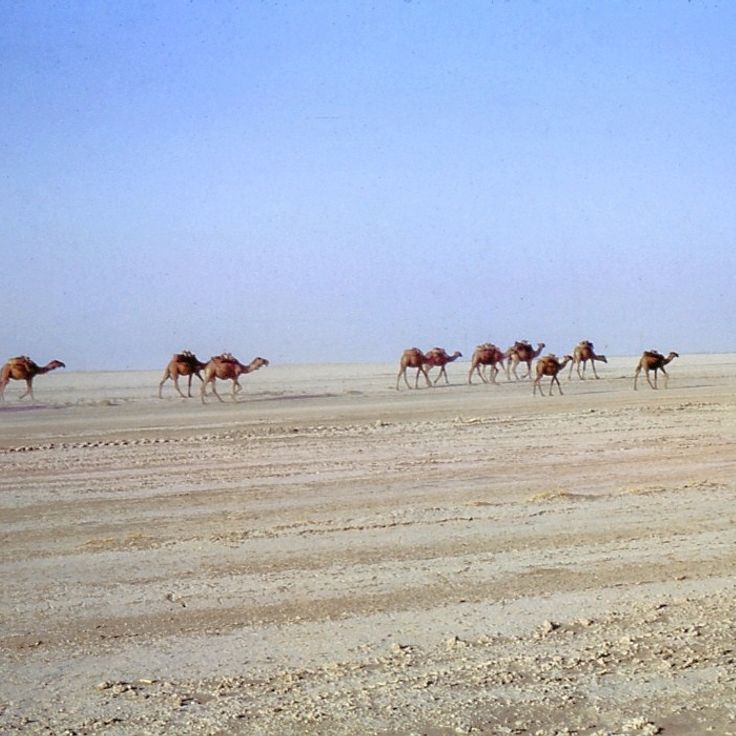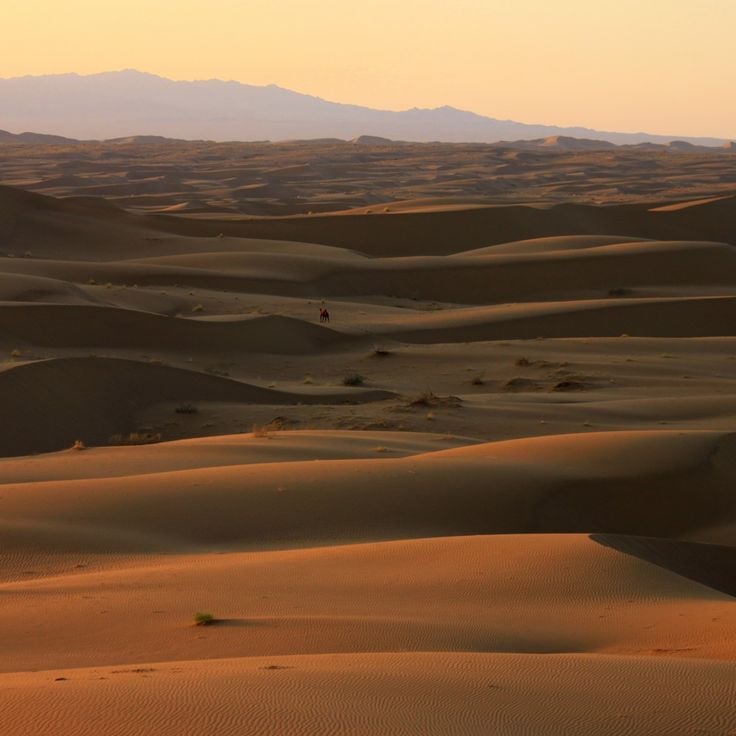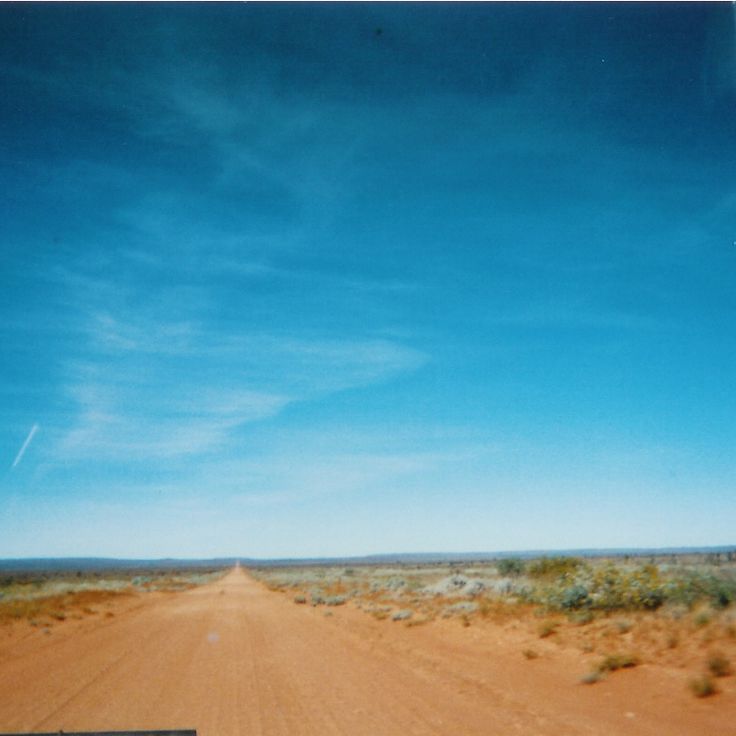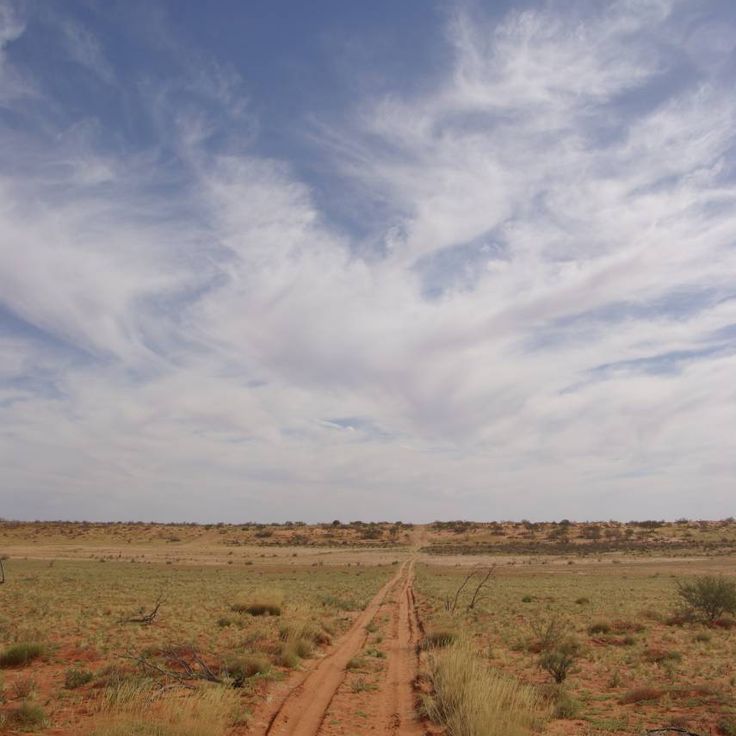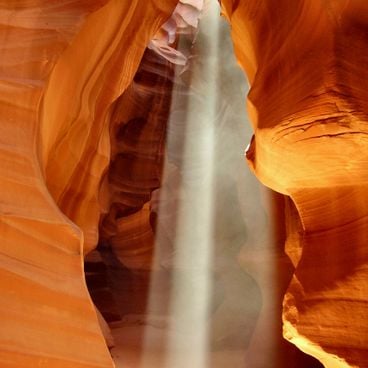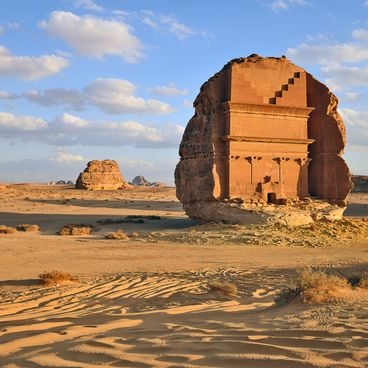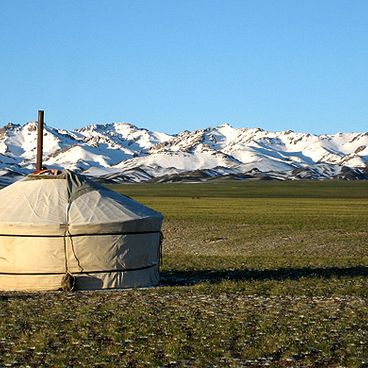The world's largest desert expanses range from the poles to subtropical areas. From Antarctica with its 14 million square kilometers to the Mojave plains, these regions are characterized by extreme conditions and low rainfall. Polar deserts dominate in area, followed by hot deserts like the Sahara and the Arabian Desert. Each region features specific geological and climatic characteristics, creating distinct landscapes.
The Antarctic Desert extends over 14 million square kilometers, making it the largest cold desert on Earth. In this polar region, temperatures can drop to minus 90 degrees Celsius, while annual precipitation remains extremely low.
The Gobi Desert is a continental desert located between Mongolia and China which alternates between rocky areas and sand dunes, with extreme temperatures ranging from -40°C to +50°C.
The Sahara covers an area of 9 million square kilometers, making it the largest hot desert on Earth. Daytime temperatures there regularly reach 50°C.
The Sonoran Desert extends over 310,000 square kilometers between the southwestern United States and northwestern Mexico. This region experiences temperatures that regularly reach 45 degrees Celsius and hosts exceptional biodiversity with cacti such as the saguaro, along with numerous reptiles and mammals adapted to extreme aridity.
The Arabian Desert covers 2.3 million square kilometers and features red sand dunes that stretch across hundreds of kilometers. This desert region includes vast plains, mountain ranges, and dry wadis that carry water only after rare rainfall. Temperatures can reach 50 degrees Celsius during the day, while nights become considerably cooler.
The Kalahari Desert is a subtropical sand desert extending across dry savannas and extensive red dune fields. This region supports numerous animal species including lions, cheetahs, giraffes and antelopes that have adapted to water-scarce conditions. The vegetation consists primarily of grasses, thorn bushes and scattered acacia trees.
The Arctic Desert extends over 13.7 million square kilometers in the northern polar region. Winter temperatures average -30°C, while the ground remains permanently frozen. This area is characterized by extremely low precipitation levels and sparse vegetation consisting mainly of lichens and mosses.
The Patagonian Desert extends across vast rocky plateaus and plains shaped by constant winds. Temperatures remain low throughout the year, and vegetation is limited to resistant grasses, shrubs, and cacti adapted to aridity and cold conditions.
The Chihuahuan Desert stretches between the United States and Mexico, forming the largest desert in North America. This subtropical arid region is home to numerous cactus species, including agaves and yuccas, as well as plants that have adapted to high daytime temperatures and cool nights.
The Syrian Desert extends across limestone plateaus and gravel plains in a subtropical zone. Since antiquity, trade routes have crossed this territory, connecting various regions of the Middle East.
The Great Basin is a cold desert that extends between the Sierra Nevada and the Rocky Mountains. Temperatures in this region range from -10°C in winter to 38°C in summer.
The Great Victoria Desert extends across southern Australia between Western Australia and South Australia. It consists of red sand dunes stretching for hundreds of kilometers, along with shrubland areas featuring acacia and eucalyptus bushes. The region receives less than 250 mm of annual rainfall, mainly from occasional thunderstorms. Temperatures range from 18 to 23 degrees Celsius in winter and can exceed 40 degrees in summer.
The Kyzyl Kum extends over 300,000 square kilometers between the Amu Darya and Syr Darya rivers in Central Asia. This desert region experiences winter temperatures as low as -10 degrees Celsius and features expansive sand dunes and gravel plains.
The Karakum Desert covers approximately 70 percent of Turkmenistan's land area, spanning roughly 350,000 square kilometers. Summer temperatures rise to 50°C, while winter temperatures can drop to around -5°C. Annual precipitation remains low, rarely exceeding 150 millimeters.
The Colorado Plateau extends across the southwestern United States and covers an area of 337,000 square kilometers. This highland region experiences an average annual temperature of 4 degrees Celsius and is characterized by numerous canyons, mesas, and rock formations created by erosion over millions of years.
The Taklamakan Desert spans over 270,000 square kilometers in northwestern China and ranks among the largest sand deserts in the world. This region experiences extreme temperature variations, ranging from minus 40 degrees Celsius in winter to plus 40 degrees Celsius in summer. The Tarim Basin surrounds this desert area, which is known for its shifting dunes and extreme aridity.
The Thar Desert extends over 200,000 square kilometers between India and Pakistan. This region experiences high temperatures and consists mainly of red sand dunes stretching from the Indus plain to the Aravalli Range.
The Gibson Desert lies in western Australia and consists of parallel red dunes and gravel plains. It extends over an area of 155,000 square kilometers.
The Simpson Desert covers an area of 145,000 square kilometers in central Australia. It contains more than 1,100 parallel sand dunes aligned from northwest to southeast. Some of these dunes extend up to 200 kilometers in length, making them among the longest parallel sand formations on Earth.
The Namib Desert extends along the Atlantic coast for 1500 kilometers. This coastal strip receives less than 10 millimeters of rainfall per year and covers an area of 135,000 square kilometers. The desert ranks among the oldest and driest regions on Earth.
The Atacama extends along the Chilean Pacific coast and ranks among the driest regions on Earth. This desert strip records less than one millimeter of precipitation per year on average. The ground consists mainly of sand and salt, giving the landscape its characteristic appearance.
The Dasht-e Margo is a desert located in southwestern Afghanistan, distinguished by extensive sand dunes and rocky plains. This region experiences extreme heat with temperatures regularly exceeding 45°C during summer months. The area remains largely uninhabited due to harsh climatic conditions.
The Registan Desert extends across southern Afghanistan and consists of extensive red sand dunes. Strong winds continuously reshape the dune landscape, giving this area its dynamic character. Temperatures fluctuate significantly between day and night, while precipitation remains extremely low.
The Dasht-e Kavir extends across the central plateau of Iran and covers approximately 77,000 square kilometers. This desert consists of vast salt flats interrupted by clay plains and sand dunes. Temperatures range from minus five degrees in winter to fifty degrees in summer, creating extreme climatic conditions.
The Lut Desert extends across southeastern Iran, covering approximately 51,800 square kilometers. This rocky desert records ground temperatures that can reach 80 degrees Celsius, making it one of the hottest measured places on Earth. The area features sand dunes, salt plains, and dark lava fields.
The Mojave Desert spans between California and Nevada, covering approximately 124,000 square kilometers. This desert sits at an average elevation of 1000 meters and features rocky mountain ranges, extensive sandy areas, and extreme temperature variations. The region receives less than 150 millimeters of rainfall annually and supports characteristic vegetation such as the Joshua tree, along with various drought-adapted animal species.
The Tanami Desert extends between the Northern Territory and Western Australia and consists mainly of red sand. The Tanami Track, an unpaved road approximately 1000 kilometers long, crosses this desert region and connects Alice Springs with Halls Creek. This desert is home to several Indigenous communities and features characteristic flora and fauna adapted to extreme aridity.
The Strzelecki Desert extends north of Lake Frome in South Australia and is characterized by its distinctive parallel sand dunes running in a north-south direction. This desert region forms part of the arid Australian interior and is named after Polish explorer Paul Strzelecki.
